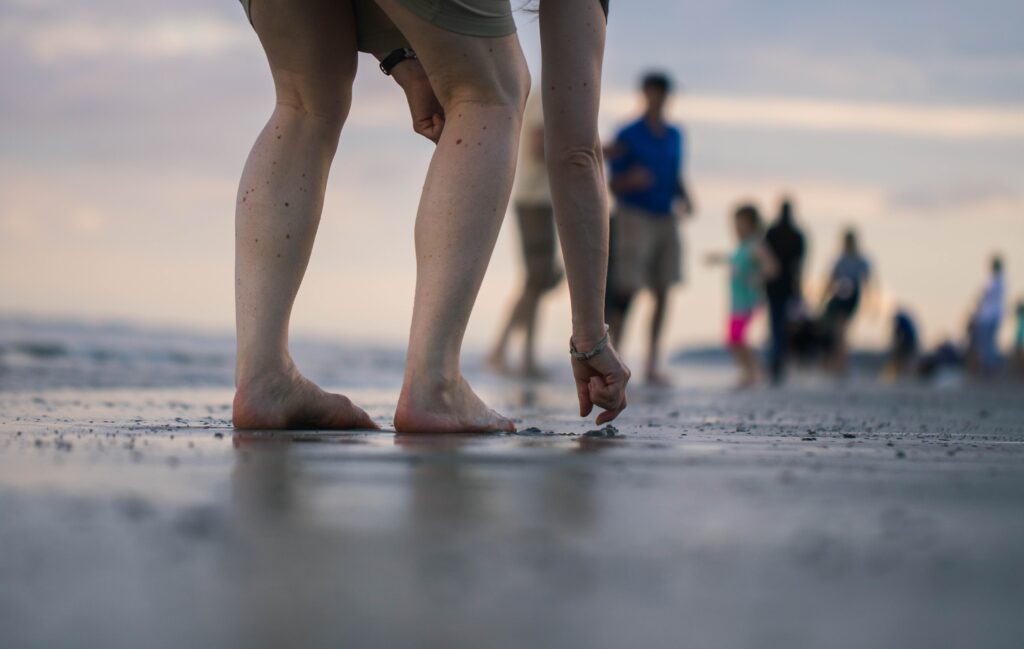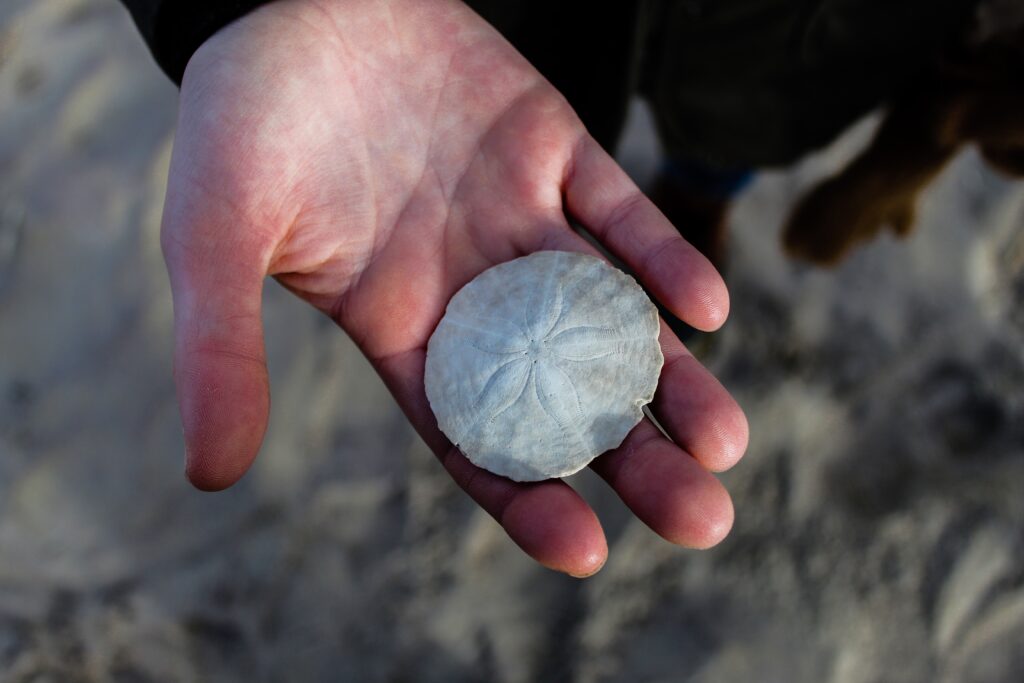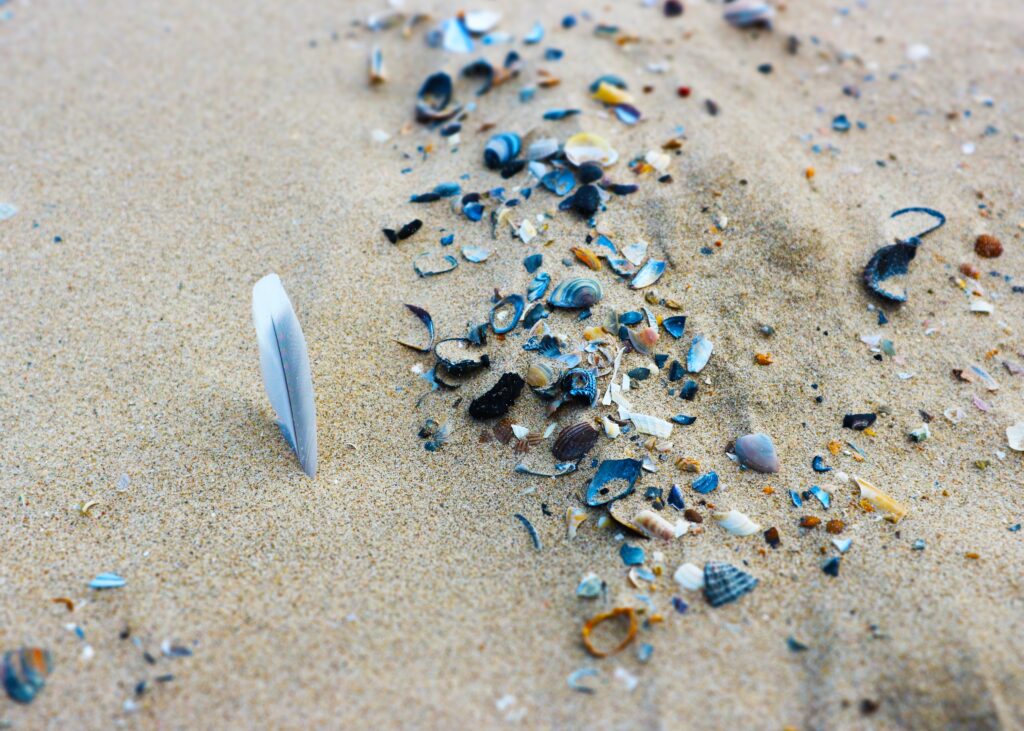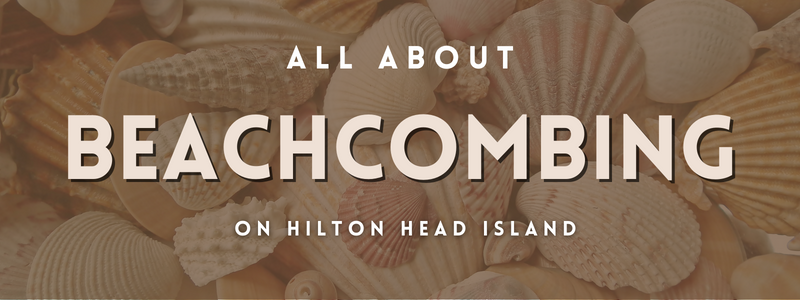Written by Erin Laytham Lentz
Over two million people per year descend upon Hilton Head Island to enjoy sunshine and miles of sandy beaches. There are few things as relaxing or rewarding as strolling the beach in search of treasures that have washed up on shore. The most commonly found shells on Hilton Head Island include the Lettered Olive, Branded Tulip, Channeled Whelk and Atlantic Jackknife. In addition to a variety of shells, beachcombing on Hilton Head Island can reveal island life discoveries such as sand dollars, horseshoe crabs, clams, oysters, starfish and many mollusks. Sea shell hunting is fun for all ages and creates instant souvenirs from a memorable vacation.

Before you go beachcombing, however, make sure you know how to tell the living from the dead sea life. The island is well-known for its beautiful and abundant sand dollars and starfish. Sand dollars are protected, and many are alive. Removing a living sand dollar from the beach can result in a hefty fine. One of the ways to differentiate a live sand dollar is that they are “fuzzy.” If the cilia and velvety skin is missing then it is not alive. Sand Dollars can vary from a deep brown to a purplish-red color when alive. They will produce a harmless substance called echinochrome which turns your skin yellow. They cannot survive out of water more than a few minutes so if you find one, return it to its home on the ocean floor. After the animal dies, the sun fades its color and it turns to a silvery white.

Starfish (Sea Stars) are stunning animals that come in a variety of shapes, sizes and colors. Though they live in the ocean and are called fish, they are not fish. They are identified by their five arms, and will generally move their arms if picked up. It is not unusual for a live starfish to drop an arm as a defense mechanism when they are threatened or grabbed. The starfish will regenerate another arm with one year. Mollusks such as clams, scallops and oysters occupy shells which they live in for their protection. Any empty or uninhabited shell can be collected and cleaned in a bleach/water combination, then dried in the sun.
Shark’s teeth are sought and found on Hilton Head if you know where to look. There are beaches such as Fish Haul’s Creek, Burke’s Beach and Mitchelville Beach that are less populated. The teeth can be found in clusters in these public parks in proximity to the beach and tidal marsh. Some people venture out on a day trip to nearby beaches, Folly Beach or Pawley’s Island and attest to the quality and size of the teeth found there compared to other beaches. The shark’s teeth are often found south of a pier, between rock piles or between the dunes and water’s edge right out in the open.

Do you prefer to comb the beach for treasures in the sunny, warm tourism months or prefer the cooler winter temps when the beach is largely to yourself? Regardless of your preference, on Hilton Head Island, combing the beach is a year round activity. For successful beachcombing it is suggested to bring a bucket or bag, a shell guide, beach-friendly sandals and sunglasses. Many local companies offer beach walks and beachcombing tours that educate participants on the value of the dunes, the sea creatures and different types of shells. There are beachcombing excursions that include searching for shells, sand dollars, starfish, crabs and shark’s teeth. The Lowcountry Sandbars can only be visited during low tide so some trips often depart at different times of day depending on the tide.
